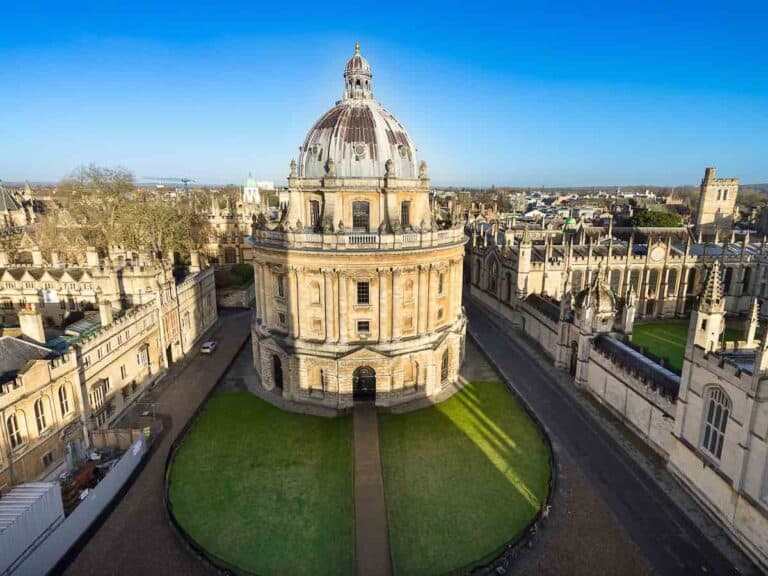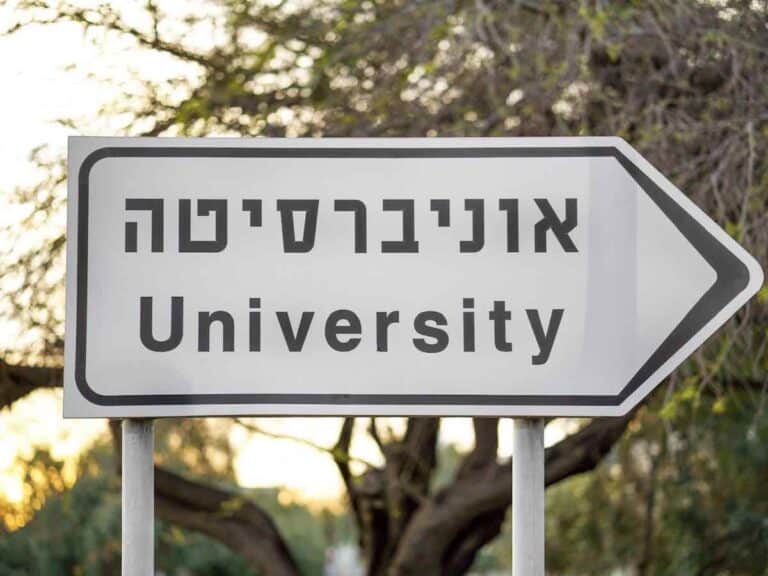How Does Free College Work Outside the US
I remember when I talked to my colleague from New Zealand, he revealed that he didn’t pay for his Master’s degree. He told me that you get the degree for free there, but then the government collects the cost of college from your taxes.
And boy, he was glad he left the country immediately after graduation!
And that applies to other countries as well, where higher education is “free.”
In general, free college in other countries isn’t absolutely free. In some instances, students still have to take on some college-related costs. As a matter of fact, in some countries, tuition has to be repaid in other ways, such as in the form of military service. The bulk of the cost of free college is usually borne by taxpayers.
World Population Review, which is a California-based independent organization that sources information from census and UN data, says that there are, as of this writing, 39 countries all over the world with free college.
But before you consider packing your bags in hopes of earning a bachelor’s degree at no cost, read on.

Is There Free College in the US?
There are numerous free colleges in the US. Students, in many situations, can work on an undergraduate degree with the government paying tuition as they themselves shoulder other associated costs. There are, as expected, eligibility requirements to meet and policies to adhere to.
If free college is what you’re after, there’s really no need to look far and wide.
Based on a CNBC report, there are free colleges in nearly 30 US states.
In New Mexico, for example, Gov. Michelle Lujan Grisham signed an act that establishes the most comprehensive tuition-free scholarship program in the land yet, which is the New Mexico Opportunity Scholarship Act.
The said act is similar to the Excelsior Scholarship in New York, where eligible students can attend a SUNY or CUNY college or university free of any tuition for 4 years. Besides associate and bachelor’s degrees, it also covers certificates.
However, as always, free college is relative and not absolute.
Taking a quick look at the fine print, more often than not, will tell you that you will need to be a member of a low-income household or hail from a certain state or region of the country to be eligible for a free tuition program.
Some institutions, meanwhile, may require students to partake in campus work or service after getting their degrees.
It’s also important to note that, in a lot of instances, students attending college for free will still have to take care of some other college-related expenses, such as transportation and room and board.
Excluding community colleges, the following are some American colleges that do not charge tuition costs:
- Alice Lloyd College
- Antioch College
- Apprentice School
- Barclay College
- Berea College
- College of the Ozarks
- Curtis Institute of Music
- Deep Springs College
- Haskell Indian Nations University
- United States Air Force Academy
- United States Coast Guard Academy
- United States Merchant Marine Academy
- United States Military Academy
- United States Naval Academy
- University of New Hampshire
- Warren Wilson College
- Webb Institute
- Williamson College of the Trades
Believe it or not, it’s possible for you to attend an Ivy League school tuition-free.
As a matter of fact, Princeton University expects around 25% of all its undergraduate students to attend at no cost. The prestigious school in New Jersey adds that it also covers room and board, books and personal expenses of eligible students.
Being a part of a low-income family may let you attend paying nothing — it will all depend on how much money your family makes a year or the assets you or your parents have.
At Harvard University, for instance, you can qualify if your family’s annual income is less than $75,000.
And because students whose families make over $150,000 per year may also qualify for financial aid, the Ivy League says that attending it is cheaper for over 90% of American families than a public institution.
Read Also: 10 Reasons Why College Should Not be Free and 12 Reasons Why It Should Be
How Can Colleges in Other Countries Afford to Provide Free Education?
Academic institutions outside the US offer free education in a similar way that public domestic colleges do: through government funding. So, in other words, international schools are mostly run with taxpayers’ money. In some countries, students who attend free college are required to provide service.
Ted Hughes, an English poet, once said: “Nothing is free. Everything has to be paid for.”
True enough, students attending colleges in other countries (as well as locally) will have to pay for their undergraduate degrees in some way — either directly by themselves or by other people.
As mentioned earlier, in many cases, free college isn’t absolutely free. There are times when institutions say that attending them costs zero.
However, looking closely, it turns out that tuition is the only one that’s on the house. The rest, unfortunately, are still around for degree-seeking students and their respective families to take care of.
Let’s take a look at how colleges outside of the US are able to afford to provide free education:
Taxes
Most governments across the globe make money, first and foremost, from taxes. However, among numerous other things, collected taxpayers’ money goes back to the taxpayers themselves.
For instance, taxes are spent on the improvement and maintenance of infrastructure, from roadways and railways to waste management and power and energy.
Among the many different public services whose lifeblood is taxpayers’ money, academic institutions, in particular public schools, are some of the primary beneficiaries.
In the US, based on data provided by the National Center for Education Statistics (NCES), the total expenditure of the government for public education from 2018 to 2019 alone amounted to $800 billion.
Needless to say, chances are that the tuition costs at free colleges are paid for by taxpaying citizens.
While using taxpayers’ money to fund the postsecondary education of students so that they don’t have to is thoughtful and considerate, a problem lurks around.
College is far from being cheap. And for the government to be able to fund the education of students attending college free of charge, they need lots and lots of money from the taxpayers.
True enough, when free college was reintroduced in Germany in 2014, enrolment to 4-year institutions rose to 22% and taxes to shoulder the educational expenses of admitted students increased by 37%.
It’s no wonder why, based on a report, Germany has the highest tax wedge!
Keeping acceptance rates to free colleges low is a solution to minimizing the burden of the taxpayers in sending students to school.
But there’s another one that can keep the doors open to more who would like to get their hands on an undergraduate degree: by bringing down the overall cost of college.
Unfortunately, this can risk the quality of postsecondary education — the lack of qualified professors and inadequate teaching materials and facilities may leave students with less-than-stellar bachelor’s degrees.

Service
Earlier, I mentioned a number of US colleges and universities where degree-seeking students may attend at no cost. Some of the ones included on the list are the military schools and academies in the country.
At other free colleges, interested students can easily be misled.
That’s because, in numerous instances, tuition is the only college-related expenditure that institutions will cross out from the cost of attendance. It goes without saying that both students and their families will still have to pay for other things.
Fortunately, the US Air Force Academy, US Military Academy and the rest change the game.
The federal government will be the one who will pay not only for your tuition and fees as a student at any of those schools but also for room and board. However, there are a couple of important things you need to know beforehand.
Acceptance rates can range anywhere from 9% to 18% only, making them more selective than the vast majority of colleges and universities in the county.
At US Military Academy – West Point, for instance, admitted freshmen students have an SAT score range of 1210 to 1440 and an ACT score range of 28 to 33.
As a matter of fact, more than 75% of its cadets received a GPA of at least 3.75 in high school.
Then there’s also the fact that you will have to repay the school after earning your degree — most of the time, graduates of US military schools and academies are required to serve on active duty for at least 5 years after graduation.
Well, at some colleges and universities abroad that offer free education, graduates are required to protect the countries that conferred them with diplomas gratis by rendering military service for a specified number of years.
This should not be mistaken for compulsory military service for able-bodied male citizens within a certain age group in some countries.
Which Countries Have Free College?
The World Population Review says there are 39 countries where free college exists. The majority of them are European countries where taxes are generally higher, which is why their governments can afford to offer free education. But, as always, there are restrictions and policies that come with free college.
According to data from the Education Data Initiative, the average cost of a bachelor’s degree in the US is $102,828 at a public institution (in-state) and $218,004 at a private non-profit school.
Because of these steep figures, it can be tempting to grab free college available outside of the country.
But be wary: there is always some sort of a catch! For instance, chances are that you will have to pay other college-related costs or repay the school by rendering work or military service after graduation.
At some international schools, free education may be limited to certain programs or majors. Free courses may be taught, too, in the local language.
Then there’s also the fact that not all free colleges offer accommodation to students, which means that you may have to be faced with exorbitant living costs, depending on where in the world you will work on an undergraduate degree.
The importance of knowing the terms that come with free college beforehand cannot be stressed enough!
Without further ado, here are some of the countries that offer free college to domestic students and, in some instances, international students, too, as well as the respective stipulations:
- Argentina. Public universities in Argentina are tuition-free. In the case of the University of Buenos Aires, free tuition education is available to both domestic and international students.
- Austria. The government of Austria pays for the majority of the cost of an undergraduate degree.
- Belgium. College students in Belgium either pay affordable tuition or zero tuition costs, depending on the institution and eligibility requirements met by the students.
- Brazil. Public colleges in Brazil are referred to as federal universities, where admitted students need not take care of tuition costs. However, most admits are middle-class and wealthy students.
- Cuba. Free education system in Cuba comes at the cost of loyalty to the country and community service.
- Czech Republic. Whether domestic or from abroad, students can enjoy free postsecondary education in the Czech Republic. However, the courses of free programs are taught in Czech.
- Denmark. Unfortunately, free college in Denmark is limited to domestic and EU students. Students from other countries, however, have a range of scholarships and grants to choose from.
- Egypt. Public postsecondary education is free in Egypt. Meanwhile, private education can be very costly.
- Estonia. In Estonia, international students have to pay nominal fees only.
- Finland. Higher education courses taught in Finnish or Swedish are cost-free for international students. On the other hand, English-taught programs come with tuition and fees.
- France. While tuition is free for EU students, universities in France ask for minimal student fees.
- Germany. At public colleges and universities in Germany, everyone can enroll without shelling out money for tuition. This applies to domestic, EU and international students.
- Greece. While postsecondary education is free at public universities in Greece, courses are taught in Greek.
- Iceland. Public colleges in Iceland are tuition-free, although students have to pay registration fees.
- India. Students who are very poor are admitted to public colleges free of charge. Meanwhile, the rest have to pay minimal fees as the majority of the expenses are shouldered by the government.
- Iran. No matter the level, education is free in Iran. Those who attend free colleges, however, are required to serve the government for as long as the length of time it will take them to earn a degree.
- Italy. Domestic and international students can enjoy free college in Italy if they meet the requirements.
- Kenya. Students with high aptitude test scores are eligible for having free postsecondary education in Kenya, although available slots are extremely limited.
- Luxembourg. The only public degree-granting institution in Luxembourg is the University of Luxembourg. Some qualified students may attend the school without paying for any tuition.
- Malta. For domestic and EU students, higher education in Malta is free.
- Mauritius. Besides college, all levels of education in Mauritius are available for free.
- Mexico. In Mexico, public universities and technological institutions have zero tuition costs for domestic students. However, the rest of the costs of college have to be paid.
- Morocco. Although tuition is free at public colleges and universities in Morocco, student fees, room and board and other college-related costs aren’t.
- New Zealand. Only students who are attending college for the first time can enjoy cost-free education in New Zealand. International students, unfortunately, are not some of them.
- Norway. Like many European countries, Norway offers free college to domestic, EU and international students. But minimal fees have to be shouldered by all per semester.
- Panama. Postsecondary education is free for all in Panama. In addition, the living cost in the country is low.
- Philippines. State and local institutions in the Philippines are free of tuition and, in some cases, fees.
- Poland. In Poland, those who wish to apply to public colleges and universities need not worry about shelling out money for higher education as the government takes care of it. International students, though, pay nominal fees.
- Russia. Postsecondary education in Russia is cost-free, but students need to have high grades.
- Slovenia. For domestic and EU students, higher education in Slovenia is free of charge. As a matter of fact, up to 80% of college students in the country pay zero fees.
- Spain. Because public institutions in Spain are funded by the government, higher education is free for domestic and EU students. International students, meanwhile, have to pay specific fees.
- Sri Lanka. Higher education in Sri Lanka is free, but state colleges offering them are highly competitive.
- Sweden. Only doctoral degrees in Sweden are free. International students may enjoy some stipends, though, but they will have to take into account the country’s steep cost of living.
- Trinidad and Tobago. Undergraduate degree programs are free at some Trinidad and Tobago colleges.
Unfortunately, neither the UK nor Canada not on the list, but feel free to read posts about cheap colleges in Great Britain and cheap colleges in Canada.
Just Before You Go Abroad to Enroll in a Free College
It is said that many colleges and universities outside of the US are cheaper. By leaving your family and friends behind to relocate for the next 4 to 6 years or however long it takes for you to complete the undergraduate program of your choosing, you can lower the cost of a bachelor’s degree.
However, don’t forget to consider things such as the cost of living, courses taught in a different language, not being able to work part-time due to visa restrictions and homesickness.
And always remember to read the fine print to check what you will have to give in exchange for free college.
Read Next: 17 Best Cheap Universities in Europe
Disclaimer: The views and opinions expressed in this article are those of the authors and do not necessarily represent those of the College Reality Check.





